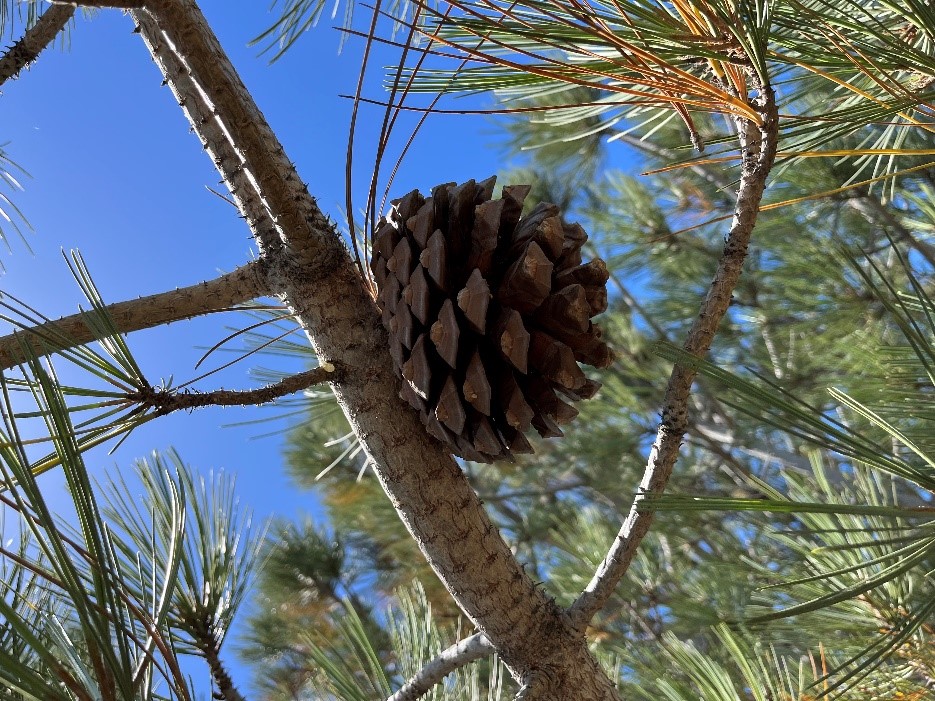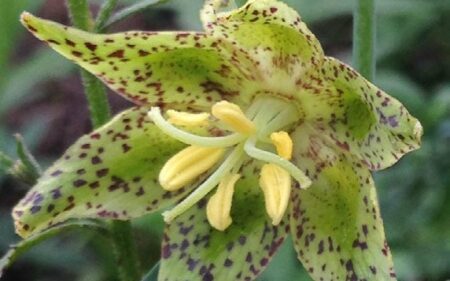The Torrey Pine: Conserving California’s Rare Pine

Santa Barbara Botanic Garden’s horticulture team just returned from a successful trip to Santa Rosa Island to collect seed from the island subspecies of Torrey pine (Pinus torreyana ssp. insularis). Torrey pines are one of the rarest pines in the world, and only occur in two places: on Santa Rosa Island off the coast of southern California and Torrey Pine State Reserve, just north of San Diego, CA.
As part of the Garden’s conservation-driven mission, we’re working with staff from San Diego Botanic Garden in collaboration with a research team from North Dakota State University and UC Davis to create a conservation grove of Torrey Pines. This project wouldn’t have been possible with funding from the Tree Gene Conservation grant from the American Public Gardens Association and the United States Forest Service.
Why Grow a Conservation Grove of Torrey Pines?
The Global Strategy for Plant Conservation (GSPC) recommends that at least 75% of threatened plant species should be preserved in ex situ collections. This strategy helps conservation institutions like Santa Barbara Botanic Garden combat the many forces that threaten species with limited distribution, especially fire, diseases, climate change, and poaching. Ex situ conservation can be accomplished by a few different methods. Two of the most common methods are seed banking and adding plants to the living collections of botanic gardens.
Conservation Groves are a focused effort to capture broad genetic diversity across the native range of a species, with collections keeping track of “maternal lines” or the seeds from individual trees. The Garden has a unique history with Torrey Pines, our Hay Hill property hosts a long-term experiment on the viability of hybrids between the island and mainland subspecies started in 2007 by Dr. F. Thomas Ledig.
The Four Day Scouting Trip

The scouting trip started on July 13 and included four members of the Garden’s staff including myself, the Garden’s living collection curator, Ground’s Manager Stephanie Ranes, Gardener Olivia McKelvey-Hembree (who specializes in work on the Garden’s Island View section), and Living Collection Assistant Katelyn Miller. We spent four days on Santa Rosa Island searching the grove for Torrey pines with fresh cones.



Pine cones can take years to mature, and don’t necessarily follow a seasonal schedule, so finding open cones with viable seed inside requires a bit of work. The team mapped a total of 45 trees with open cones and were able to collect seed from almost half of those trees on this initial trip. We avoided taking seed from trees that have already been stored in seed banks thanks to data provided by Di Santo et al, the research team from North Dakota State University and UC Davis. This approach allowed us to collect a broad range of genetic diversity while ensuring we are not over-representing the genetics from any one tree in ex situ collections.

The team learned a lot from this first trip about the grove of Torrey pines on Santa Rosa Island and the process of extracting viable seed from the cones. Seeing the micro habitats and conditions where these trees grow in the wild is important as we seek to learn how to best cultivate them here at the Garden.
The next step is planning our follow up visit in early fall to get the seeds we collected prepared for germination testing and cultivation so stay tuned.
 Donate
Donate




